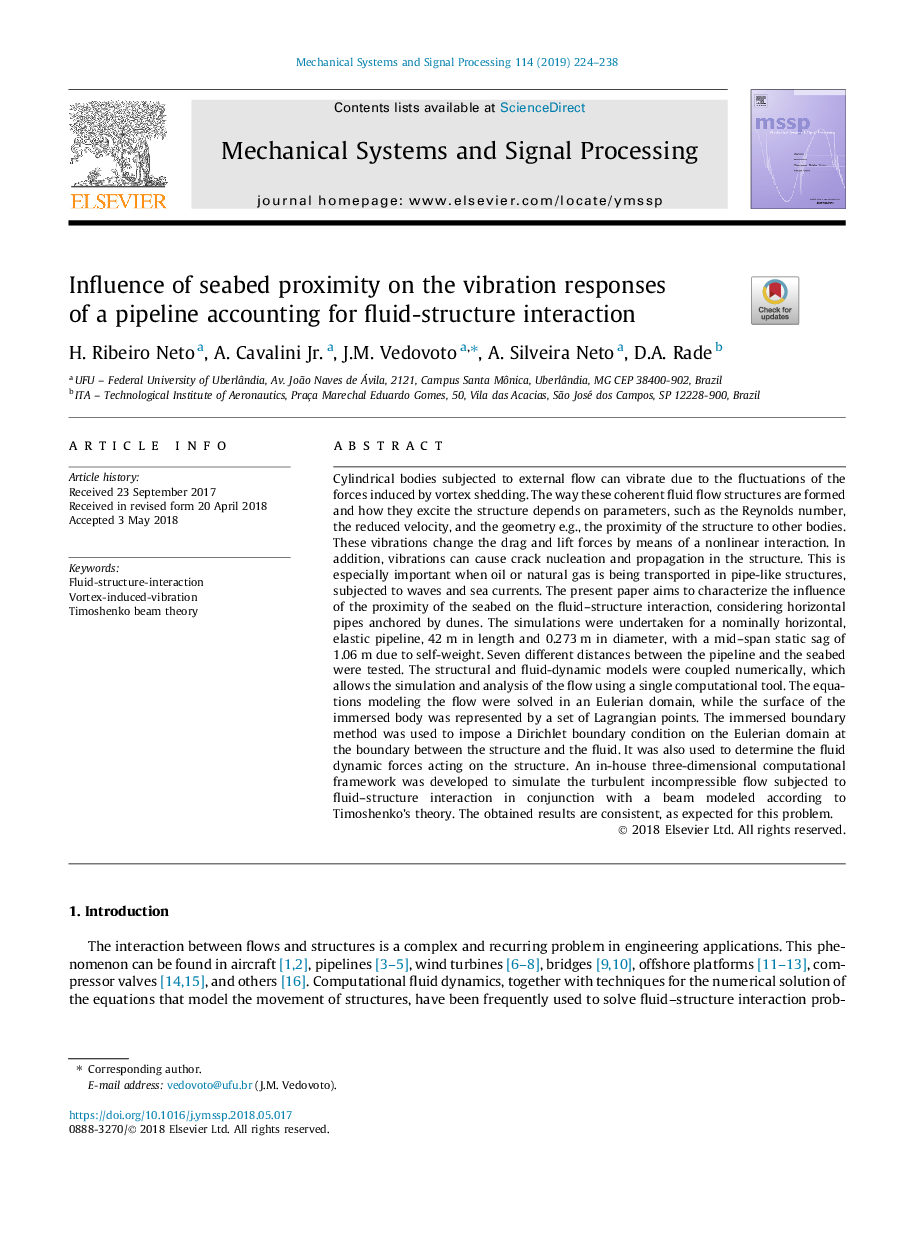| کد مقاله | کد نشریه | سال انتشار | مقاله انگلیسی | نسخه تمام متن |
|---|---|---|---|---|
| 6953620 | 1451821 | 2019 | 15 صفحه PDF | دانلود رایگان |
عنوان انگلیسی مقاله ISI
Influence of seabed proximity on the vibration responses of a pipeline accounting for fluid-structure interaction
ترجمه فارسی عنوان
تأثیر نزدیکی دریایی به پاسخ ارتعاش یک خط لوله برای تعامل ساختار مایع
دانلود مقاله + سفارش ترجمه
دانلود مقاله ISI انگلیسی
رایگان برای ایرانیان
کلمات کلیدی
موضوعات مرتبط
مهندسی و علوم پایه
مهندسی کامپیوتر
پردازش سیگنال
چکیده انگلیسی
Cylindrical bodies subjected to external flow can vibrate due to the fluctuations of the forces induced by vortex shedding. The way these coherent fluid flow structures are formed and how they excite the structure depends on parameters, such as the Reynolds number, the reduced velocity, and the geometry e.g., the proximity of the structure to other bodies. These vibrations change the drag and lift forces by means of a nonlinear interaction. In addition, vibrations can cause crack nucleation and propagation in the structure. This is especially important when oil or natural gas is being transported in pipe-like structures, subjected to waves and sea currents. The present paper aims to characterize the influence of the proximity of the seabed on the fluid-structure interaction, considering horizontal pipes anchored by dunes. The simulations were undertaken for a nominally horizontal, elastic pipeline, 42â¯m in length and 0.273â¯m in diameter, with a mid-span static sag of 1.06â¯m due to self-weight. Seven different distances between the pipeline and the seabed were tested. The structural and fluid-dynamic models were coupled numerically, which allows the simulation and analysis of the flow using a single computational tool. The equations modeling the flow were solved in an Eulerian domain, while the surface of the immersed body was represented by a set of Lagrangian points. The immersed boundary method was used to impose a Dirichlet boundary condition on the Eulerian domain at the boundary between the structure and the fluid. It was also used to determine the fluid dynamic forces acting on the structure. An in-house three-dimensional computational framework was developed to simulate the turbulent incompressible flow subjected to fluid-structure interaction in conjunction with a beam modeled according to Timoshenko's theory. The obtained results are consistent, as expected for this problem.
ناشر
Database: Elsevier - ScienceDirect (ساینس دایرکت)
Journal: Mechanical Systems and Signal Processing - Volume 114, 1 January 2019, Pages 224-238
Journal: Mechanical Systems and Signal Processing - Volume 114, 1 January 2019, Pages 224-238
نویسندگان
H. Ribeiro Neto, A. Jr., J.M. Vedovoto, A. Silveira Neto, D.A. Rade,
